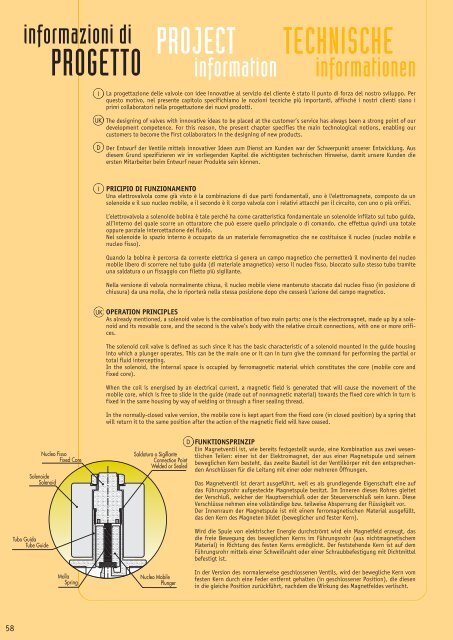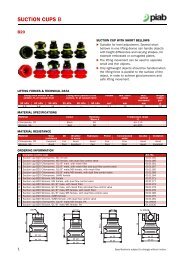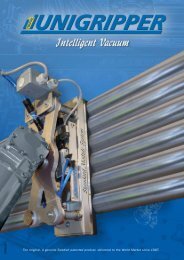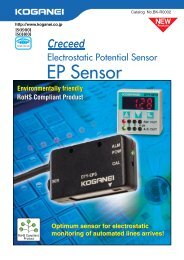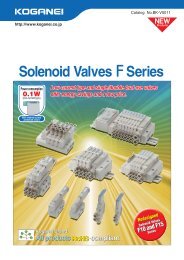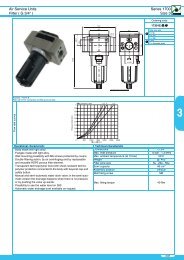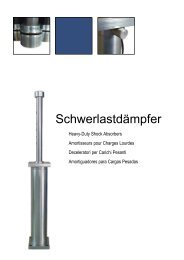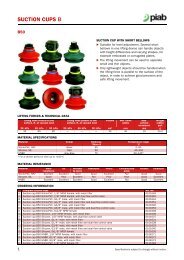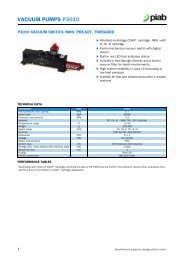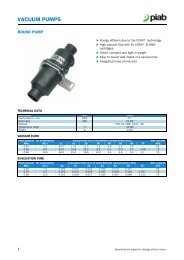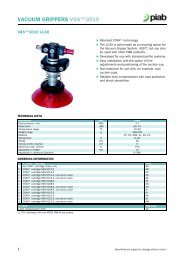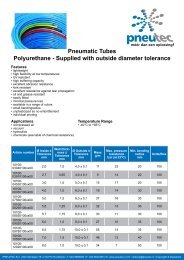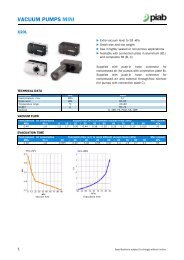You also want an ePaper? Increase the reach of your titles
YUMPU automatically turns print PDFs into web optimized ePapers that Google loves.
informazioni diPROGETTO PROJECTinformation TECHNISCHEinformationenILa progettazione delle valvole con idee innovative al servizio del cliente è stato il punto di forza del nostro sviluppo. Perquesto motivo, nel presente capitolo specifichiamo le nozioni tecniche più importanti, affinché i nostri clienti siano iprimi collaboratori nella progettazione dei nuovi prodotti.UKThe designing of valves with innovative ideas to be placed at the customer’s service has always been a strong point of ourdevelopment competence. For this reason, the present chapter specifies the main technological notions, enabling ourcustomers to become the first collaborators in the designing of new products.DDer Entwurf der Ventile mittels innovativer Ideen zum Dienst am Kunden war der Schwerpunkt unserer Entwicklung. Ausdiesem Grund spezifizieren wir im vorliegenden Kapitel die wichtigsten technischen Hinweise, damit unsere Kunden dieersten Mitarbeiter beim Entwurf neuer Produkte sein können.IPRICIPIO DI FUNZIONAMENTOUna elettrovalvola come già visto è la combinazione di due parti fondamentali, uno è l'elettromagnete, composto da unsolenoide e il suo nucleo mobile, e il secondo è il corpo valvola con i relativi attacchi per il circuito, con uno o più orifizi.L’elettrovalvola a solenoide bobina è tale perché ha come caratteristica fondamentale un solenoide infilato sul tubo guida,all’interno del quale scorre un otturatore che può essere quello principale o di comando, che effettua quindi una totaleoppure parziale intercettazione del fluido.Nel solenoide lo spazio interno è occupato da un materiale ferromagnetico che ne costituisce il nucleo (nucleo mobile enucleo fisso).Quando la bobina è percorsa da corrente elettrica si genera un campo magnetico che permetterà il movimento del nucleomobile libero di scorrere nel tubo guida (di materiale amagnetico) verso il nucleo fisso, bloccato sullo stesso tubo tramiteuna saldatura o un fissaggio con filetto più sigillante.Nella versione di valvola normalmente chiusa, il nucleo mobile viene mantenuto staccato dal nucleo fisso (in posizione dichiusura) da una molla, che lo riporterà nella stessa posizione dopo che cesserà l’azione del campo magnetico.UKOPERATION PRINCIPLESAs already mentioned, a solenoid valve is the combination of two main parts: one is the electromagnet, made up by a solenoidand its movable core, and the second is the valve’s body with the relative circuit connections, with one or more orifices.The solenoid coil valve is defined as such since it has the basic characteristic of a solenoid mounted in the guide housinginto which a plunger operates. This can be the main one or it can in turn give the command for performing the partial ortotal fluid intercepting.In the solenoid, the internal space is occupied by ferromagnetic material which constitutes the core (mobile core andfixed core).When the coil is energised by an electrical current, a magnetic field is generated that will cause the movement of themobile core, which is free to slide in the guide (made out of nonmagnetic material) towards the fixed core which in turn isfixed in the same housing by way of welding or through a finer sealing thread.In the normally-closed valve version, the mobile core is kept apart from the fixed core (in closed position) by a spring thatwill return it to the same position after the action of the magnetic field will have ceased.Nucleo FissoFixed CoreSolenoideSolenoidTubo GuidaTube GuideDSaldatura o SigillanteConnection PointWelded or SealedFUNKTIONSPRINZIPEin Magnetventil ist, wie bereits festgestellt wurde, eine Kombination aus zwei wesentlichenTeilen: einer ist der Elektromagnet, der aus einer Magnetspule und seinembeweglichen Kern besteht, das zweite Bauteil ist der Ventilkörper mit den entsprechendenAnschlüssen für die Leitung mit einer oder mehreren Öffnungen.Das Magnetventil ist derart ausgeführt, weil es als grundlegende Eigenschaft eine aufdas Führungsrohr aufgesteckte Magnetspule besitzt. Im Inneren dieses Rohres gleitetder Verschluß, welcher der Hauptverschluß oder der Steuerverschluß sein kann. DieseVerschlüsse nehmen eine vollständige bzw. teilweise Absperrung der Flüssigkeit vor.Der Innenraum der Magnetspule ist mit einem ferromagnetischen Material ausgefüllt,das den Kern des Magneten bildet (beweglicher und fester Kern).Wird die Spule von elektrischer Energie durchströmt wird ein Magnetfeld erzeugt, dasdie freie Bewegung des beweglichen Kerns im Führungsrohr (aus nichtmagnetischemMaterial) in Richtung des festen Kerns ermöglicht. Der feststehende Kern ist auf demFührungsrohr mittels einer Schweißnaht oder einer Schraubbefestigung mit Dichtmittelbefestigt ist.MollaSpringNucleo MobilePlungerIn der Version des normalerweise geschlossenen Ventils, wird der bewegliche Kern vomfesten Kern durch eine Feder entfernt gehalten (in geschlossener Position), die diesenin die gleiche Position zurückführt, nachdem die Wirkung des Magnetfeldes verlischt.58


